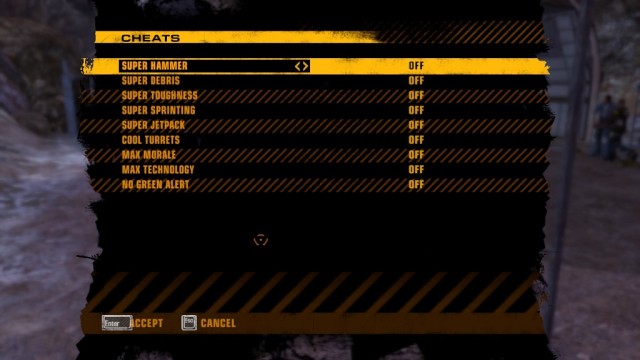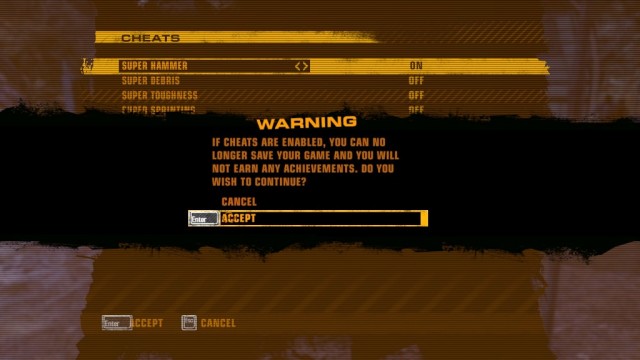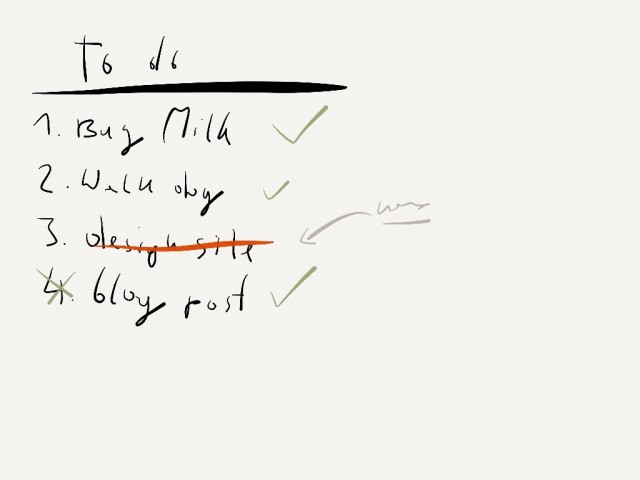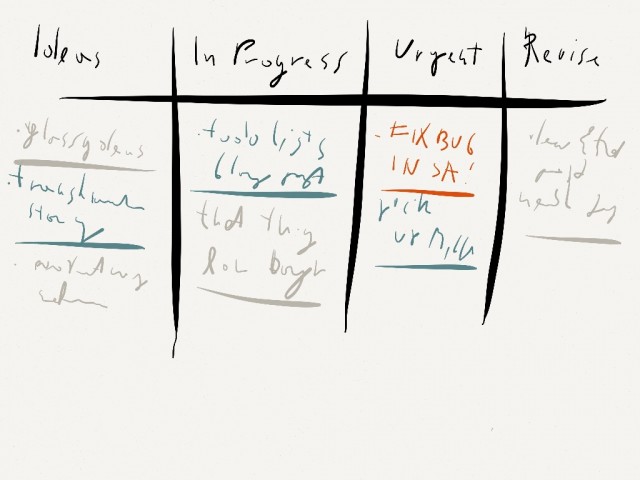Red Faction: Guerrilla is a remarkable game. I don’t think I have ever seen a product with so many good ideas, all of which are implemented poorly. And it is not that the implementation is buggy or half-assed. The game is simply broken by design. The good ideas are squandered via silly design choices. Let me explain…
The Story
The game has a simple and fairly decent premise. You arrive on Mars looking for work as a miner. You quickly learn that the local government is kinda corrupt and on an out-of-control totalitarian power trip. You witness your brother being brutally murdered by the local law enforcement on a suspicion of aiding the titular “Red Faction” – a Martian resistance movement seeking to overthrow the government and restore democracy. You end up hooking up with said organization and you become instrumental in the fight for free Mars.
There is absolutely nothing wrong with this setup. This is some really good stuff. You have personal loss, revenge story, freedom fighting, etc… Sadly, the game fails to capitalize on it. Your brother dies in the first 5 minutes of the game. You only have a single conversation with him, you play a short tutorial mission and he is gone before you can form any sort of attachment to him. He is not even a fully fledged character – he is merely a plot hook.
30 seconds after he is dead, you are given a gun and told “You are Red Faction now, go do missions and shit…” What about revenge you ask? Well, you sort of already killed the murderers of your brother in the cut-scene so… We’re just not going to mention the revenge anymore. You will just have to be content to kill faceless mooks for the rest of the game.
I mean, this is not rocket science. This is sort of creative writing 101 type thing. First, you need to let the player get attached to the brother character. Make him cool, memorable and awesome. Have the player run few missions with him and make him do cool things. Then when you kill him, it will actually mean something. Secondly, don’t kill him by the way of disposable mook who dies 5 seconds later in the same cut-scene. This is your chance to introduce the big bad. Let’s say his name is General Whatshisface and he shoots your brother, execution style, then runs away. Now you have a mortal enemy you can look forward to fighting at the end of the game.
But no, the writers went for the “Btw, your brother got killed and that’s why you are in resistance movement… Now, go do sandbox stuff!”
Free Roaming Sandbox
The game is set up as a free roaming sandbox environment. It is actually pretty lenient about where you go, and lets you screw around quite a bit which is great. I really liked just running around and destroying governmental property for fun and profit. Unfortunately I kept running into invisible walls. This became especially annoying when I got the jetpack near the end of the game, and was tempted to take shortcuts through the mountains. Half the time I would run into an invisible wall, or unassailable, bottomless chasm or both.
Not to mention that it is not a true sandbox in the way say Skyrim is. You can’t just drive around the map, find a spot and decide to start questing there. The game has a very linear progression – you have to liberate each region in order to progress to the next one, and get level appropriate upgrades. How do you liberate a region? You grind.
No, seriously. This is not even an RPG but you are expected to grind the area, destroying EOF property until you fill a quota. Of course, that’s not enough. Believe me, I tried. I once destroyed every building and killed every EOF soldier in the region. But the game would not progress because I didn’t do any of the mini-quests and so none of the story-quests in the area were unlocked. The zone only becomes liberated after you complete a specific number of these story quests.
If you are a completionist and you sweep the zone clean before doing any quests, the game will happily spawn more enemies for you. I once had to break into an enemy base that I razed to the ground 15 minutes earlier, and destroy a building that was not there before. I was a bit annoyed. The game had a very GTA feel too it most of the time, and it was only really fun when it broke out of it and let you use it’s strong points (destructible environments) or just run wild.
How could they improved it? For starters they could remove all the invisible walls and terrain funnels and let you take shortcuts because that’s what being guerrilla should be all about. Making zones small but numerous, and marking them as “liberated” as soon as you destroy EOF presence there, and letting you grind any part of the huge map would go a long way of establishing a feeling of freedom. And of course, less GTA styled scripted missions have more open-world objectives you can accomplish in any order (there are some in the game – like destroying all the smoke-stacks in Oasis).
Fully Destructible Environment
Red Faction’s claim to fame are the fully destructible environments. All the buildings in the game can be demolished. I absolutely loved the fact I could take a shortcut through the building by making a hole in the wall with a hammer. Or that I could take out a sniper’s nest by sneaking up and deploying explosives on the bottom of the tower. This is an awesome mechanic, and I wish more games did this sort of thing with their environments.
Sadly, most of the terrain in the game is non-destructible. The destruction prone structures are usually confined to sparse “decorative settlements” or enemy bases that you need to destroy to progress. The rest of the game world is just barren rock. What’s worse, some of the story-missions were set up as terrain funnels that forced you to progress down a linear corridor made out of indestructible rock, fighting your way through a heavily defended road blocks. Or escort missions. Or timed driving missions.
It is as if the designers made an extra effort to make sure you are not having too much fun with their unique gameplay mechanic, so they added mandatory missions in which you do don’t use it.
See, the most fun I had in this game was when I could jet-pack my way to a cool firing position on top of a mountain, and then take out entire buildings with 2-3 well placed shots with the nano-rifle. Whenever the game forced me to drive through a specific maze of pathways, or funneled me towards enemy not allowing me to flank, or be sneaky and evasive I got annoyed.
When you set out to build a game with a cool gimmick, why not go all out? Look at Portal for example. That’s a game that took a cool idea and built a game around it. Valve didn’t build Half Life 2 with a portal gun – they built something fun an unique. Red Faction could have been that – a game with 100% destructible sandbox levels allowing player unprecedented freedom and fueling creative, emergent gameplay. But instead they decided to keep the game as close to GTA model as possible, actually putting in a lot of effort to ensure the destructible buildings are spaced out sparsely enough so that can’t be creatively abused and that a game about wrecking shit with a sledgehammer has a disproportionate amount of mandatory driving in it.
Salvage and Crafting
At the beginning of the game you are told to collect salvage, because it can be used to craft new weapons and upgrades. I was very briefly excited that there will be a crafting system in the game. Of course I immediately realized that the “salvage” is essentially just cash you use to buy upgrades. Which I guess makes sense. I mean, the designers wanted to provide an incentive for you to wreck shit with a hammer and it would be kinda silly for destroyed buildings to “drop” gold coins for you to collect. So they instead “drop” pipes, plates and barrel like things that shine and glow – but still work as in-game cash you use to buy upgrades. And said upgrades only become available as you progress through the levels so there is never a time where you can actually “personalize” your load-out.
Imagine if they went one step further and took the idea of collecting “salvage” to its logical conclusion. You collect raw materials and machine parts to build weapons, upgrades or even vehicles “fallout 3” style. Wouldn’t it be more bad-ass for your character to raid an EOF factory specifically to steal jet-pack parts, rather than just to have it appear as an option when you liberate Oasis region about half way throughout the game?
Save Anywhere System
When I first launched the game, I kinda got excited to see the “Save Game” option available in the menu. You don’t see it often these days. A lot of games insist on using checkpoints for some strange reason. So I was really happy this one would let you save anywhere.
Then I discovered this feature becomes disabled as soon as you start a mission. Also, saves do not preserve your position in the world. When you load the game you automatically start from one of the safe houses. Which is monumentally stupid. But this is more of a personal pet peeve of mine. The save system is functional – just annoying to me.
Final Words
I don’t think I had such mixed feelings about a game in a while. Usually I either like a game or hate it. I just don’t know how I feel about this one. On one hand, it profoundly annoyed me. On the other, I really had a lot of fun with the destructible environments. It is just such a pity the designers desperately tried to keep this game as close to GTA model as possible. They had a really, really great idea: a free roaming sanbox with fully destructible environment. This game could have been phenomenal. It could have been a cult classic, which people would play over and over again just to do crazy shit. It could have supported emergent gameplay and creativity. But it was as if the designers either got scared of their own creation or were told to keep it simple and familiar by the publisher. They have put in a lot of effort into making the game a shitty GTA clone. And I mean a lot of effort. It is almost harder to build a sanbox that is this linear, and heavily funneled. You can actually tell the designers put a lot of time into spacing out the destructible objects so that they don’t overlap, or so that they support the scripted missions. Have a quests that involves taking out sniper nests? Glass walkways everywhere that shatter when shot so that they player can’t use them as firing platforms. Quest objective at the top of the mountain? Have player drive a tank up a windy non-destructible terrain funnel and fight his way through 17 enemy checkpoints and start him back at the bottom if the vehicle is destroyed. Why couldn’t they go all out? Why didn’t they design an environment in which the player could tunnel through mountains Minecraft style if he wished to do so.
If you have a cool gimmick, use it. Make it the core of your game. Make the game be all about it. Red Faction took a good idea and haphazardly strapped it into a crappy GTA clone. It was a safe choice, but you don’t make it big by making safe choices. The thing about GTA style sandbox games is that everyone does them, and some people do them very well. It’s kinda sad when you think about it, but Just Cause 2 has about as much total destructible buildings as Red Faction – only they are scattered across a vastly larger map. Oh, and that game lets you hijack plains in mid flight… So if you really wanted to play a GTA clone where you can blow up smoke-stacks and statues for in-game points you might as well play Just Cause 2 instead of Red Faction.



